I have to admit it. I am addicted to traditional Maltese festas (feasts). Every year, I help organise the one in my town, I follow others in neighbouring villages and I share this tradition with many foreigners, in the hope of showing them something that can only be portrayed in my beautiful country.
The festa is a traditional Mediterranean and Catholic way of celebrating the life and death of particular Catholic Saints. It has been organised and celebrated for hundreds of years and throughout the years many traditions have been adopted by various villages and towns.
It is wrongly believed that the Maltese festa can only be appreciated by religious and spiritual people. The Maltese festa portrays the spiritual, artistic, musical, traditional, modern, and cultural and recently, even the technological aspects that together form part of our heritage and identity.
Little do people know how much work is needed for a festa to be organised. Many volunteers gather months in advance in preparation for the many features that need time and dedication to be prepared and seconds to be over. Determination and passion is passed down from one generation to another, to ensure a long life for the traditional festa.
The village festa has now become a feature and a popular event in Maltalingua’s activities calendar.
Celebrations had been taking place all week long. Flocks gathered every evening in the middle of the town square. Bars were packed. The town came alive with the sounds of people’s laughter, instruments playing delightful melodies, beer bottles clinking and fireworks roaring. It was time for me and the Maltalingua students to see these for ourselves.
I met the students at the school on Friday evening and together we made our way down to the centre of St Julian’s, where the celebrations were taking place. The village core, where the festa is at its best, is a five minute walk away from the school.
Some of us opted to buy a refreshing drink from the Band Club since it was so hot and humid. We were informed that two marching bands were to entertain the locals and foreigners with traditional Maltese music, especially composed for such events, and we decided to follow the trail of one of the bands. One of the cultural attractions during a Maltese festa is the band that marches along the streets playing non-stop music to the delight of the enthusiastic followers.
It was easy to find the band. The music echoed all around the town and we met the marching band in front of a small church. The small church, also known as Lapsi Church, was the parish church of St Julian’s, dedicated to the patron saint of the same name until 1961. Along the years, the population in St Julian’s increased drastically and the church had become too small for the villagers, so a new church was built to cater for the many families that live in the area.
The musicians were smartly dressed in their uniforms, carrying heavy instruments, led by a talented conductor with a group of youths cheering and singing at the top of their voices. Together they made their way through the narrow streets of St Julian’s until they reached the bay, where the other band was accompanying a statue of the late Pope John Paul II, which was later raised on a pedestal facing the beautiful sea.
Loud crackling sounds similar to mini explosions filled our ears. A collection of colours filled the dark evening skies. An invisible smoky cloud travelled through the air and found its way into our nostrils, infusing our heads with a delicious smell of burnt paper and gun powder. The fireworks were spectacular! Fireworks of different shapes and sizes were the highlight of the whole evening. Sadly, these were an indication that the evening’s festivities were coming to an end.
To my surprise, none of the students wanted to sleep yet. They were full of energy and all set for an endless night of fun in the land of parties, while I made my way to the land of dreams, and bid the evening goodnight.
written by Katrin Risiott

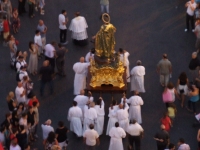
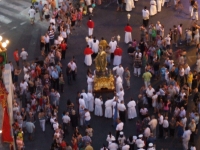
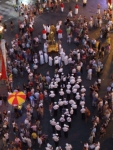

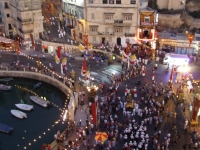
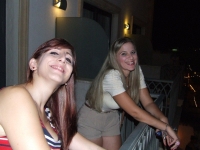
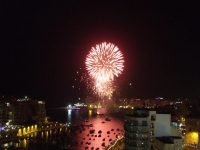

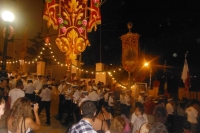
Very, very nice page! 🙂